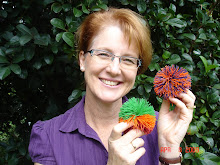Less Is More!
This is a great saying and one that the very nature of a teacher is challenged by. If you have enjoyed the last couple of posts about my use of "Random Rules" as part of my behaviour management beliefs then you will better understand this post.
With Early Years children the focus of three key behaviours proves to be enough. These would be my chosen three.
* ONE PERSON SPEAKING AT A TIME
* KIND WORDS, MANNER WORDS!
* TRYING MY BEST.
As a general rule I do not spend too much time describing how this technique works. Simply illustrating the symbols on the board and stating that I will be looking for people who are following this rule is enough . When the first child gets to record their name on the board under the rule they were doing, this is enough for the class to get the message! I also find if the class teacher already has a rewards chart in place, the names recorded can easily be transferred at the finish of a session without the disruption to the lesson time.
The little ones love being able to record their name on the board. Just allowing them to leave the classroom first at lunch time or be first to choose books from home corner can be reward enough for their good behaviour during the lesson. I would just stress that it is more beneficial to have shorter sessions and more reward points so that more child are able to feel the success of recognition.
If you feel this is all becoming too tiresome, try swapping to peer monitoring. Two children are asked to monitor their peers for a particular behaviour. You may like to give these two special people something distinguishing to hold to show they are doing a special role....maybe a soft toy or I use my Koosh balls. At the end of a short set time you ask who this person was. The child observer and the chosen child swap places and the system continues. This self monitoring technique gives power to the children and allows me to focus on my direct teaching. I always state first that if I don't agree with the decision the game stops. I also double reward if the child chooses most wisely.
Class teachers have so many wonderful ways to reward and encourage appropriate behaviours. Great results are achieved with the relationship they are able to form with the child and the class as a group. They also have the benefit of the classroom space and resources. As a relief teacher, we have to be able to implement techniques that take little resourcing, are simple and effective and lastly are clearly understood by the children.
I would love to hear about other ideas that work to make the supply teacher's day a happy and productive one.
Live, laugh and learn!
Carmel





 Allow me to introduce my little friend Crystal....yes she is a darling little hand puppet. I have found she is of most value when I visit a Prep classroom. ( This is the first year of official school attendance.) Here in an Early Years learning environment the children adore all the things that Crystal can do!
Allow me to introduce my little friend Crystal....yes she is a darling little hand puppet. I have found she is of most value when I visit a Prep classroom. ( This is the first year of official school attendance.) Here in an Early Years learning environment the children adore all the things that Crystal can do!
